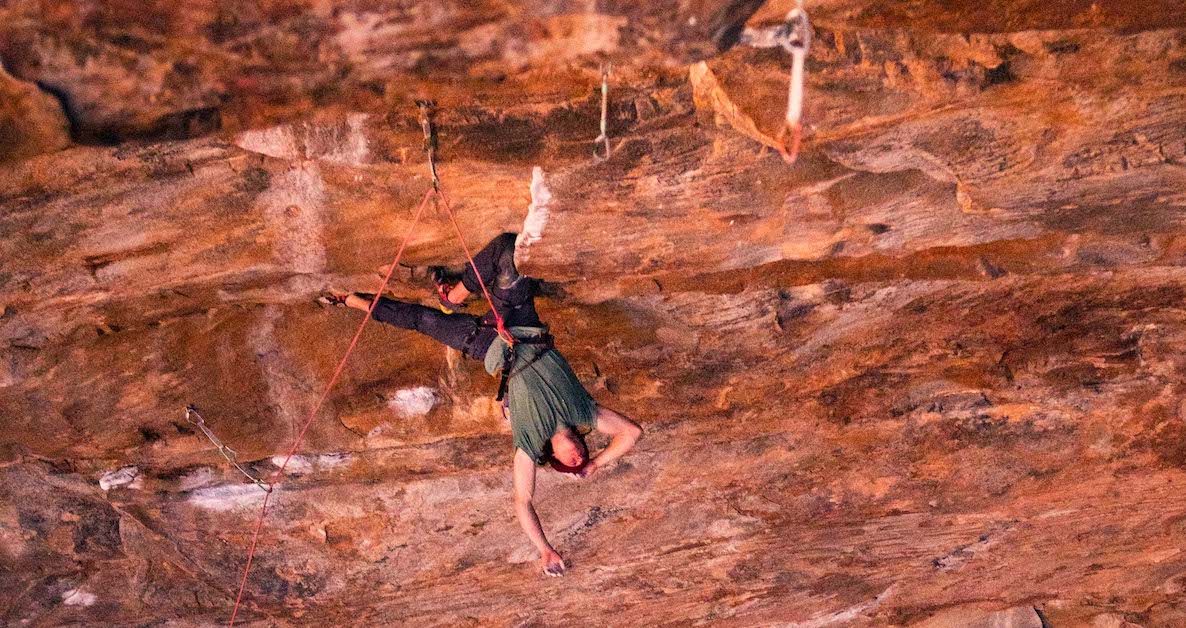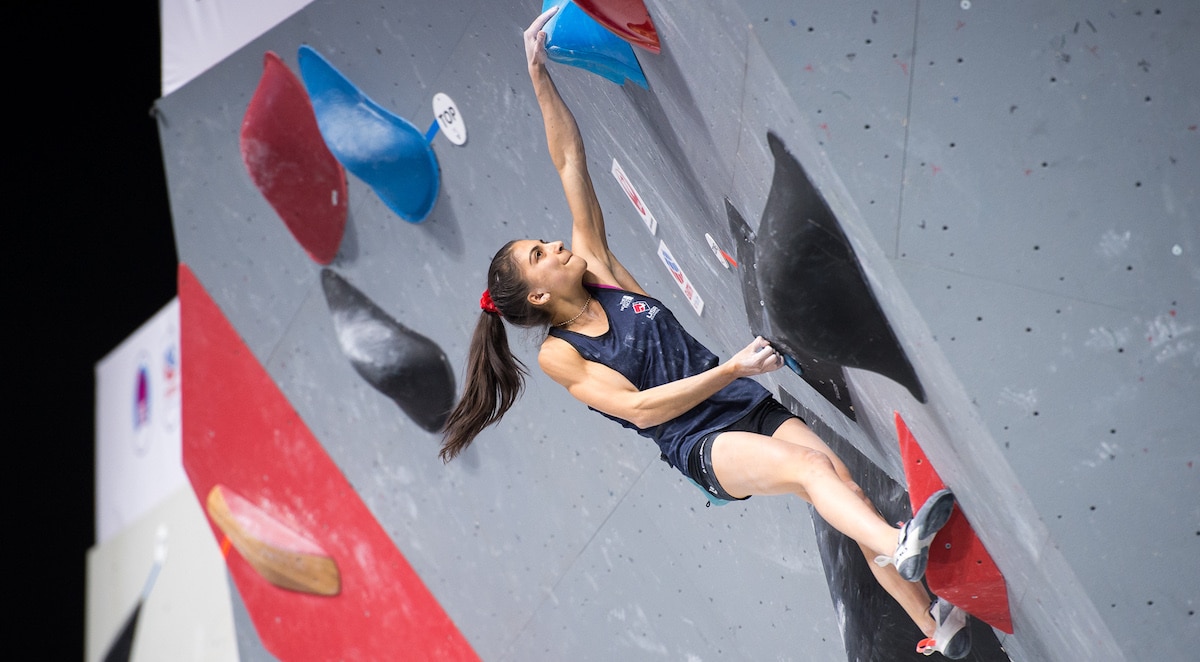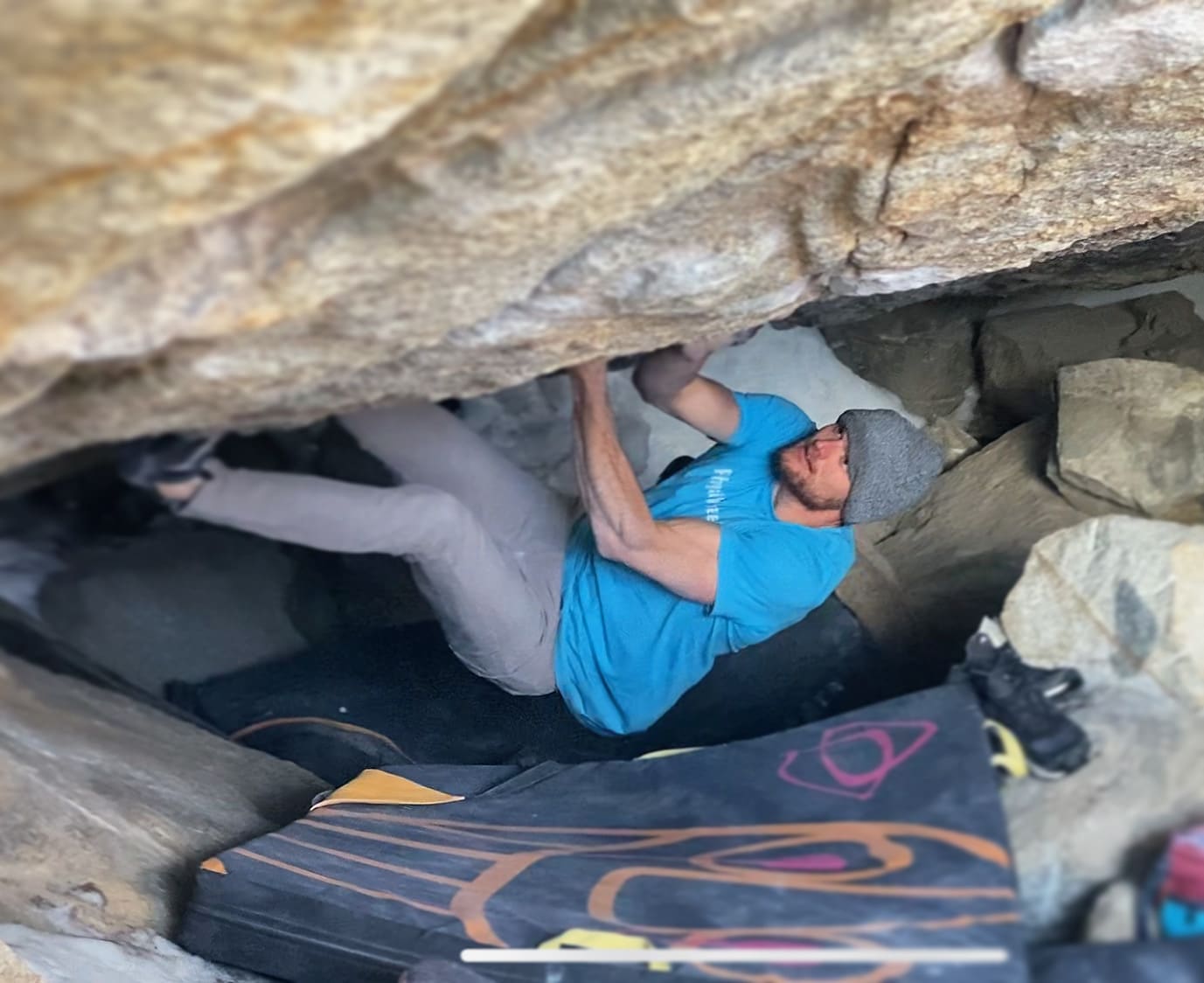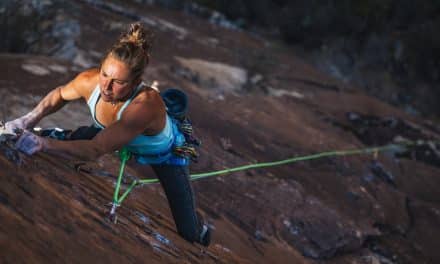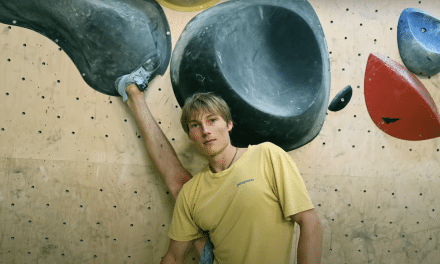PhysiVantage athlete Tyler Thompson juggles his studies in physics with taking down some of the country’s toughest sport climbs. The balance requires an intentional approach to training that makes the most of his little free time. Find out how Thompson uses simulator problems to prepare himself for his climbing goals.
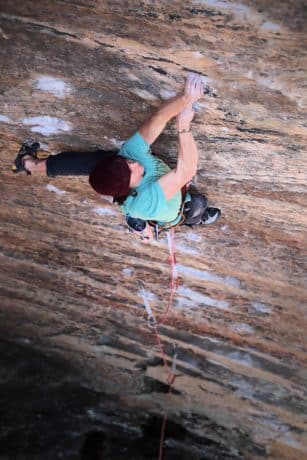
Tyler Thompson practicing perfect body tension on a tenuous cross move.
Given a mere two weeks in Utah’s prized St. George climbing area, Tyler Thompson had already conquered one of his hardest routes to date: Life of Villains (14d), a beast of a power-endurance climb in the Hurricave. That alone would have made his quick tour through the state while on break from school well worth the trip. But in the final hours of his cross-country trek, Thompson one-upped himself with a send of Bone Tomahawk (14d/15a) after putting in just four days of work on the route. These two ticks come on the heels of a stacked spring season in the New River Gorge, which included a proud send of Full Metal Brisket (15a) as well as the FA of Superluminal (14c) and a 14a flash within hours of each other.
Thompson manages all this while studying physics full-time at James Madison University in Harrisonburg, Virginia. The trick to sending so fast, he says, lies in his approach to training.
Simulator Training
When he’s not studying, Thompson works as a routesetter at the Rocky Top Climbing Gym in the nearby town of Charlottesville. He found himself pulling from his projects and dream lines for setting inspiration. Thompson soon realized that he could also flip that relationship on its head and find inspiration for climbing in his setting too.
“I set a lot of simulators for the routes I’m trying,” he explains. “I build boulders around my projects so I can work on what I need for them.”
Sometimes that’s particular moves that Thompson finds on climbs. But he doesn’t always feel the need to get quite so specific. “It’s not just the moves themselves,” says Thompson. “Replicating movement and style of movement is most important. Things like body position, tension, direction, and angle.”
Getting familiar with the key elements of his projects gives him a leg up when it comes to climbing on the real thing. As a student, Thompson can’t get out on the rock as much as he may like. He has to use his time wisely on quick trips during breaks and holidays. Going into a project already prepared for the unique demands of the climb drastically reduces the amount of time and energy he’d otherwise need to spend in the introductory stage. And if he needs to leave a climb behind for the time being, he can stay fresh on the moves until his next opportunity.
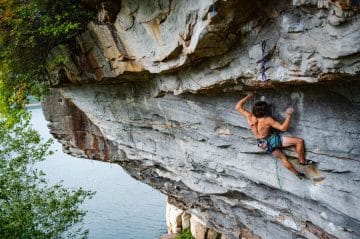
Tyler Thompson above Summerville Lake at the New River Gorge.
Thompson’s not alone in his methodology. Will Bosi attributes much of his success on the second ascent of what’s widely considered the world’s hardest boulder, Burden of Dreams (V17), to his work on a replica of the climb. Our very own Cameron Hörst has also spoken to his appreciation for simulator training. Climbing runs on muscle memory—so the more practice you can get on the style you’re after, the better.
Train with Your Project in Mind
But you don’t have to be a routesetter like Thompson to do it. He recommends keeping your climbs in mind when picking out routes to train on in the gym. “It’s not enough to just climb around. You need to get your body used to the exact kind of climbing you want to be on outside.”
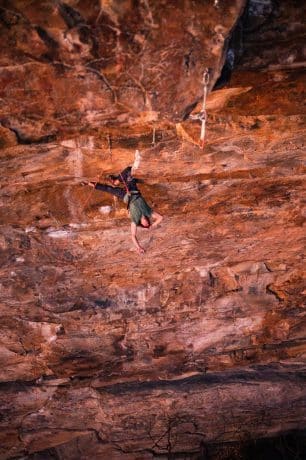
Tyler Thompson rests as hard as he climbs!
Better yet, hop on the spray wall and make up your own problems. That’s where Thompson gets in the majority of his training when he’s not on the clock as a setter.
It sounds simple. All too often, though, climbers get tempted by fresh sets that might be fun, but don’t do much to prepare them for the climbs of their dreams. There’s always wiggle room for playing around in the gym without an agenda. Most of us do climb for fun first and foremost, after all. But specific goals require specific training. If there’s something special you’re chasing, make sure to put those demands at the forefront.
Someday, when he has more time on his hands, Thompson might not have to try and complete his climbs so quickly. But the lessons he’s learning now about how to climb on a time crunch will only make him more capable in the long run. Efficiency is always an asset in this sport. Take it from Tyler Thompson and his peers at the pinnacle of climbing, and streamline your projecting process with simulator training.
Related Articles:
- How Natalia Grossman Overcame Mental Obstacles for World Cup Wins
- Paige Claassen’s Tips for Pregnant and Postpartum Climbers
- Cameron Hörst’s Proven Strategy for Endurance Training
- How Matt Fultz Trains from Home for V16 Climbs
- How Elite Boulder Andi Stull Translates Her Training to Sport Climbing
Copyright © 2000–2023 Lucie Hanes & Eric J. Hörst | All Rights Reserved.

